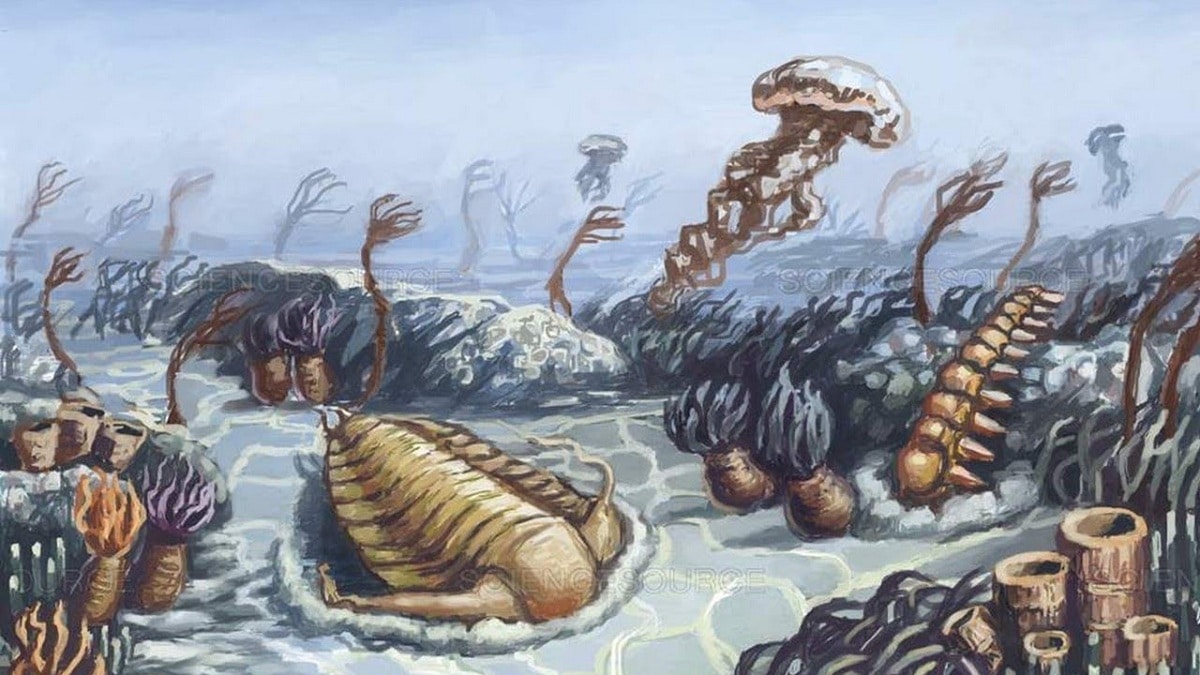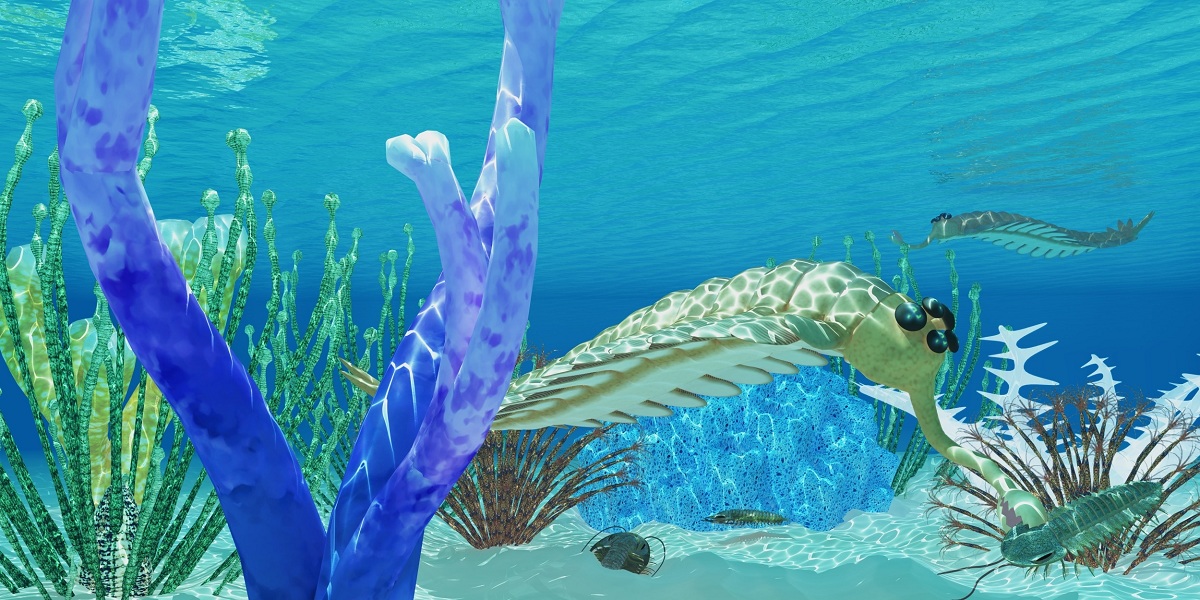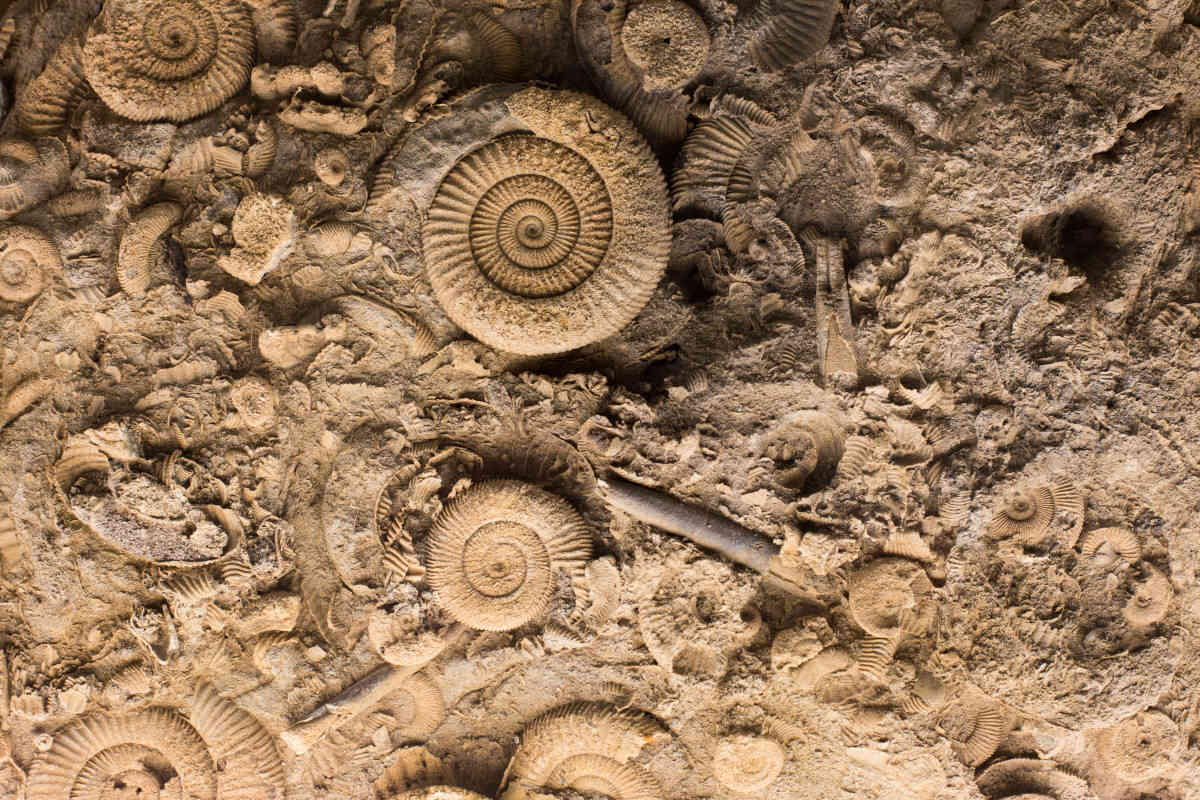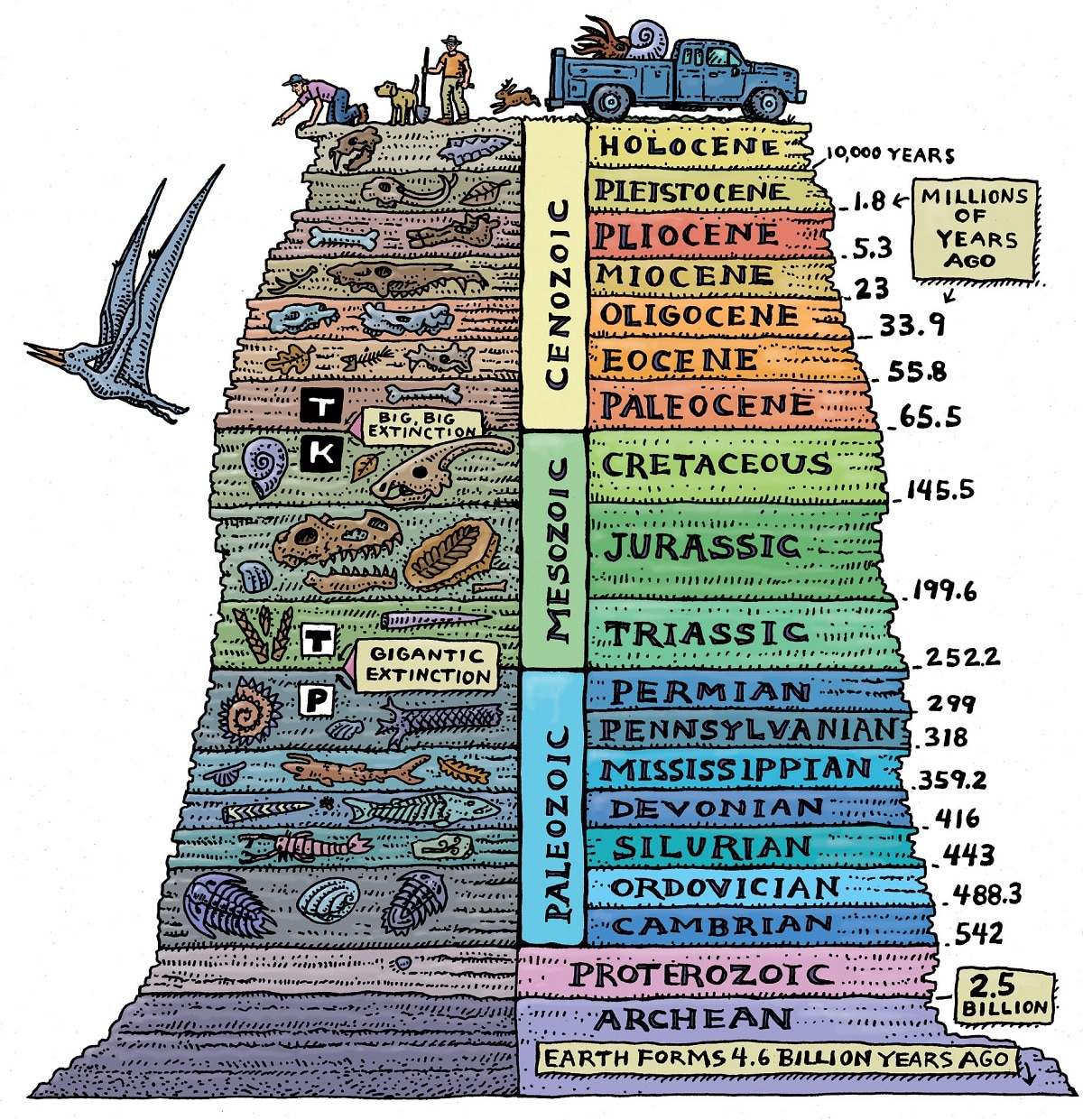
On the geologic time scale there are eons, periods, and epochs. One of them is the aeon Phanerozoic. It is known as the time scale that occurs at the end of the Proterozoic. The main difference is that living organisms begin to take much more complex forms and develop. This is how drastically evolves to the point of having a great diversity of living beings.
In this article we are going to tell you everything you need to know about the Phanerozoic, its characteristics, evolution and biodiversity.
Phanerozoic Aeon

The Phanerozoic is an era that began 590 million years ago. This is the shortest eon in the entire history of the Earth. It continues to this day. One of the facts worthy of attention is the fracture of the supercontinent Rodinia. However, certain fragments managed to unify until the supercontinent Pangea was created.
When it comes to animal life, this is one of the most changing aspects of the world, as they began to develop from structures such as shells and crustaceans to the appearance of vertebrates. It can be divided into three eras: Paleozoic, Mesozoic, and Cenozoic. One of the most important things that happened was the development of organic life. This development is relatively easy for scientists to understand, because most of the animals of the Phanerozoic period had hard parts (shells or skeletons). Unlike the soft parts, today we can find fossils of these hard parts. Besides shells and bones, many Phanerozoic rocks can also be found. Scientists can deduce the climate and the evolution of plants and animals from these rocks.
It started in the Cambrian. When the first hard-shelled animals appeared, their name is derived from the ancient Greek word phanerós, which means "visible," and zôon, which means "creature," and together they mean "visible life." The term "Phanerozoic" was adopted by the American geologist George Halcott Chadwick (1876-1953) in 1930. It is the successor to the Precambrian ultrasound, which includes Harbin Dick, Gufeng, and Proterozoic.
The duration of the Phanerozoic started with the rapid appearance of a series of animal phyla (types of organization located between kingdoms and animal kingdoms), which evolved in various ways, the development of complex plants, the evolution of fish and the evolution of insects and the appearance of quadrupeds and the development of modern fauna.
The continents

The continents we now know - Europe, Asia, Africa, Oceania, Antarctica, North America, and South America - formed a continent long ago. This supercontinent is called the Pangu continent. Due to collisions between continents, mountains are formed, just like the Appalachians in the United States. Within this huge continent, a north and south are formed, separated by the new ocean Tethys.
The north was called Laurasia, while the south was called Gondwana. Later, Laurasia was divided into North America, Greenland, Europe, and Asia. The continent of Gondwana was made up of South America, Africa, India, Australia, and Antarctica. During the Jurassic era (between 205 and 135 million years ago), the two supercontinents became further apart. The continents slowly moved to where they are now. Africa, the Arabian Peninsula, and India collided with Europe and Asia. One of the results of the collision was the Himalayas and Mount Everest, the highest mountain in the world (8850 m). The collision was of such force that the Himalayas continues to grow at a rate of a few centimeters a year. During this time the mountain ranges on the west coast of North and South America and the numerous islands on the east coast of Asia were also born.
Phanerozoic climate and atmosphere

The climate of the Phanerozoic has experienced several fluctuations. Blocks of ice formed at various times and even covered the land. About 500 million years ago (Ordovician), parts of North Africa and South America were covered by ice. Recently, between 350 and 250 million years ago (Carboniferous and Permian), glaciers covered the Gondwana continent. After that, 65 million years ago, most of Antarctica, North America, and Europe were also covered by ice.
The Phanerozoic is one of the eons that suffered the most climate changes, going from being arid at first, to being warm and humid. And finally its temperature dropped and several ice ages began. The atmosphere continues to receive oxygen from organisms that carry out the photosynthesis, similar to what plants do today.
Before the Paleozoic, there was no atmosphere as we know it today. It is at this time that the amount of oxygen begins to increase. Finally, the air contains too much oxygen, which forms the ozone layer. At high altitudes, oxygen molecules are broken down by ultraviolet radiation from the sun. These oxygen molecules combine to form ozone.
There is a thick ozone layer at a height of 15 to 35 kilometers. This layer ensures that harmful radiation from the sun does not reach the earth. Before this layer develops, animals depend primarily on water for protection. Then plants and animals can begin to live on land. The first land plants grew in the Silurian period (450 million years ago). They are vascular plants, like ferns. Several invertebrates quickly appeared. Amphibians appeared in the Devonian and reptiles in the Carboniferous. In the barrier of the Triassic and Jurassic (200 million years before) the first mammals arose and finally the birds. Mammals would play a dominant role after the extinction of the dinosaurs at the end of the Cretaceous period (65 million years earlier).
Life
The oldest fossils found are from the same period as the oldest stones. The oldest fossils are 3.400 billion years old and their structure is round and fibrous, similar to that of bacteria. Stromatolites found primarily in Shark Bay (west coast of Australia) and Yellowstone National Park (USA) were common in the Paleozoic and Proterozoic.
The first sponges appeared in the late Proterozoic approximately 700 million years ago. Generally, the animal kingdom can be divided into two categories: sponges and non-sponges. The biggest difference is that sponges don't have a digestive system, just like jellyfish and octopuses. In the early Paleozoic, vertebrates that weren't sponges grew explosively. The fossils indicate that all the invertebrates that exist today also existed 500 million years ago. The first vertebrates appeared in the Ordovician, these being the fish.
I hope that with this information you can learn more about the Phanerozoic and its characteristics.
A very good explanation in all its topics, I find it very detailed and useful.